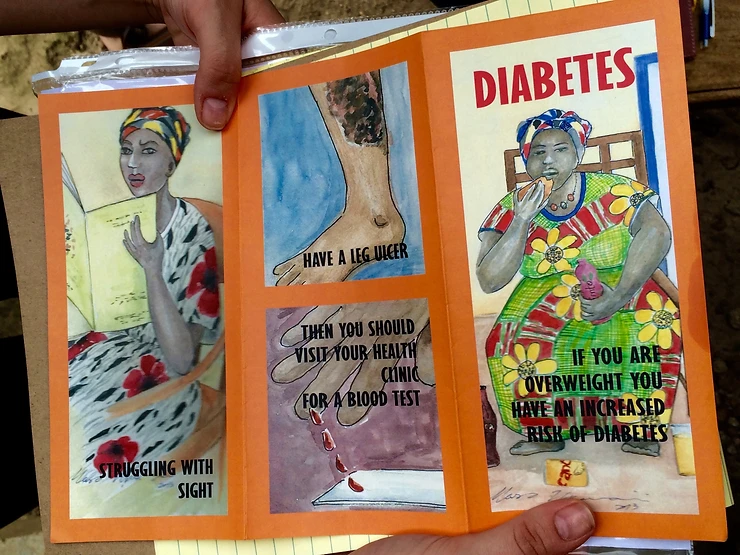May 14, 2016 | Summer 2016
This morning, we met with Dr. Kamara, Bombali District Medical Officer (DMO), in Makeni to receive approval for our venture. We shared both the OEM and hand-stamped test strips with the DMO, and discussed the logistics regarding each of our scenarios for test strip distribution. Upon support of the DMO, we were introduced to Amara Baugali Sesay, the Bombali District Pharmacist. Amara explained the hierarchy of the healthcare system in Sierra Leone and pointed us to private hospitals, public hospitals, pharmacies, and public health units (PHUs) that we could contact in order to identify the diagnosis and treatment pathways for diabetes. Today, we visited one pharmacy and two private hospitals alongside Amara, who was very kind to travel with us and get us connected with each respective entity.
We first visited a pharmacist at MK Pharmacy located at a busy intersection in Makeni. The pharmacist provided valuable information regarding the number of individuals who walk in with diabetes, how individuals get diagnosed for diabetes, what kind of medication is used to treat diabetes, and how much such medication costs for the average consumer. The pharmacist also described the challenges surrounding diabetes screenings such as misinterpretation of tests, unsteady insulin supply, and short lifespan of insulin (i.e., it expires quickly, especially in hot and humid conditions).
After MK Pharmacy, we visited Dr. P. Turay, the medical coordinator at Holy Spirit Catholic Hospital. Dr. Turay described diabetes as a “silent killer” and commented that the frequency of diabetes in patients has been steadily increasing over the past few years. Five years ago, Dr. Turay saw 1 case of diabetes for every 10 patients. Now, Dr. Turay sees 2 to 3 cases of diabetes for every 10 patients. We also learned that the Holy Spirit Hospital hosts both a Diabetes Clinic and a Diabetes Association, which tells us there is a large need for diabetes screening and treatment in Sierra Leone. Dr. Turay was very welcoming and invited us to speak with members of the Diabetes Association in the upcoming weeks, which we can use to further investigate diabetes treatment pathways and identify the optimal way to distribute our test strips.
In our last trip for the day, we visited Dr. S. Turay, a general physician at Magbenteh Community Hospital. Dr. Turay remarked that diabetes is a serious and growing problem in Sierra Leone, but not given utmost priority. Dr. Turay also described challenges facing diabetes treatment in Sierra Leone, which included getting patients to visit clinics regularly, making medication affordable, and treating patients with Type I diabetes (which is especially difficult due to limited insulin supply). Dr. Turay was very open about diabetes being a large yet unsolved problem in Sierra Leone, and hosts weekly radio sessions, called “Talk to the Doctor,” in order to raise awareness for common health problems and encouraging individuals to visit clinics regularly. Dr. Turay was very helpful in describing the obstacles facing diabetes treatment pathways in Sierra Leone, and gave us valuable recommendations regarding the future designs of our test strips.
Our visit to the pharmacist and two doctors provided valuable information on the current state of diabetes diagnosis and treatment pathways in Sierra Leone. Both the private hospitals we visited appear to be strong candidates for our study, which involves studying the outcomes and responses of community members getting screened using our test strips. In particular, the Holy Spirit Catholic Hospital provides diabetes screening for free, while the Magbenteh Community Hospital does not provide diabetes screening for free. As a result, both hospitals provide an excellent foundation to conduct paid and unpaid scenarios of study. We would like to give much thanks to Amara for connecting us with several pharmacists and doctors in Makeni, in addition to Dr. P. Turay and Dr. S. Turay for their time and consideration in answering each of our questions. Moving forward, our game plan is to visit a couple of public hospitals and PHUs over the next few days, where we hope to connect with Community Health Workers (CHWs) and further expand our venture into the different communities of Sierra Leone.













